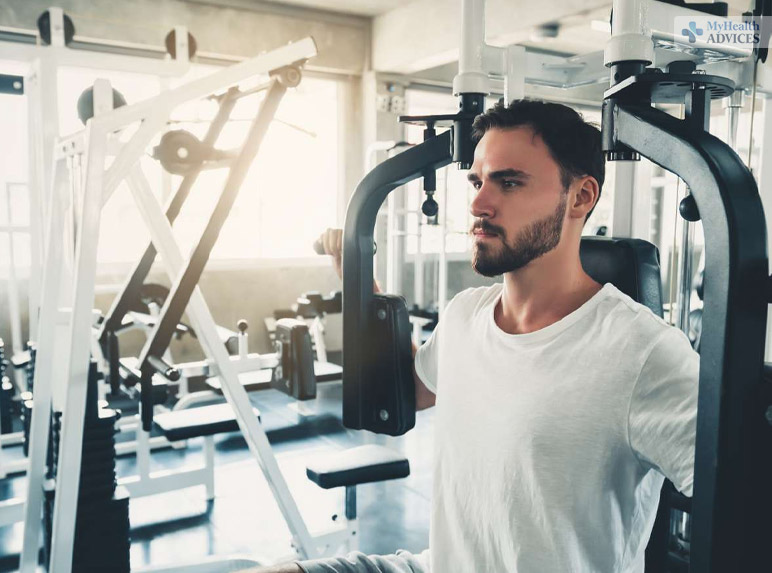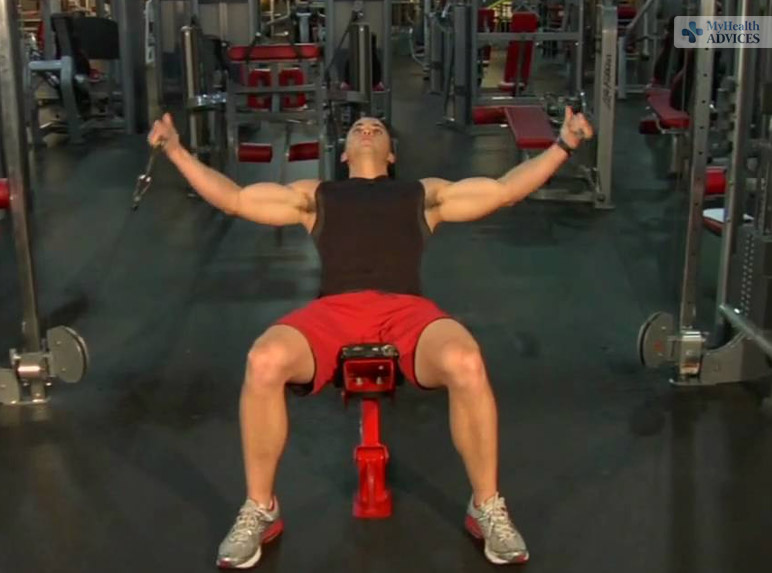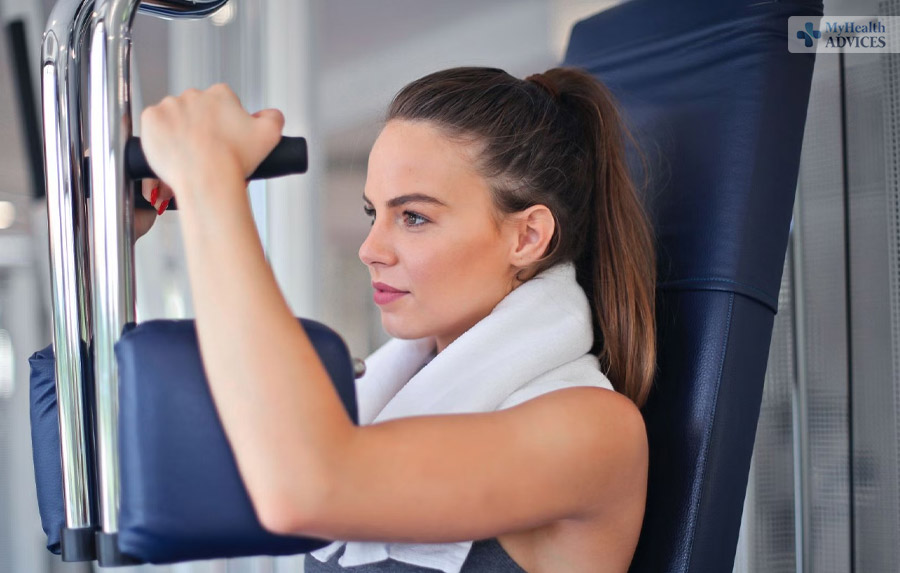The chest fly machine is a staple in any gym, offering a targeted and effective way to fabricate and tone your pectoral muscles. Known by various names, for example, the chest fly cable machine or essentially the chest fly machine, it’s a valuable tool for individuals of all fitness levels.
Whether you’re a seasoned lifter or a newcomer to the universe of strength training, this guide will walk you through the proper usage of this machine, its advantages, the muscles it works, and the right form to maximize your outcomes.
When the machine is used accurately, it can help you shape and strengthen your chest muscles, shoulders, and triceps. Make sure to set up the machine appropriately, understand the muscles worked, and maintain proper form to guarantee you’re benefiting from your workouts
What Does Machine Chest Fly Do?

Before we dive into the points of interest of how to use the chest fly machine effectively, we should initially grasp what this machine is all about. The chest fly machine is a resistance training gadget intended to isolate and target the muscles in your chest, primarily the pectoralis major.
It’s not unexpectedly perceived by its adjustable seat, padded chest pad, and a set of handles or levers that you push together in a controlled motion.
This motion intently impersonates a hugging or hugging motion, allowing you to work your chest muscles in a manner that is hard to replicate with free weights alone.
Now that we’ve covered the basics, we should break down the chest fly machine usage into several important aspects:
Set Up And Safety Precautions During Chest Fly Machine Workout
Before you start your chest fly machine workout, it’s crucial to set up the machine properly and take some safety precautions. Follow these moves to guarantee a safe and effective session:
Adjust the Seat: Start by adjusting the seat level so the handles or levers align with your chest level when seated comfortably. This alignment will guarantee that your range of motion is natural and safe.
Select the Appropriate Weight: Many chest fly machines have weight stacks or weight plates that allow you to adjust the resistance. Pick a weight that challenges you while as yet allowing you to maintain proper form. Recall that you can always increase the weight as you become more grounded.
Warm-Up: Start your workout with a light warm-up, for example, some light cardio or dynamic stretching. A warmed-up body is less inclined to injury.
Maintain Good Posture: While sitting on the machine, keep your back flat against the seat, your feet immovably planted on the ground, and your shoulders relaxed. Maintain proper alignment throughout the activity.
Muscles Worked By The Chest Fly Machine

Understanding the muscles targeted by the chest fly machine is crucial to achieving your fitness goals. While the primary focus is on the pectoralis major (chest muscles), this exercise also engages other muscle groups.
Here is a breakdown of the chest fly machine muscles worked:
Pectoralis Major: The chest fly machine effectively targets the pectoralis major, helping you fabricate and tone your chest. It engages both the sternal and clavicular heads of the pectoralis major, offering comprehensive development.
Anterior Deltoids: The front shoulder muscles, or anterior deltoids, are also involved while performing chest fly exercises. They assist in the development of your arms as you unite them.
Triceps: The triceps, located on the back of your upper arms, are engaged during the augmentation phase of the chest fly motion.
Serratus Anterior: This muscle, situated on the sides of your chest and ribcage, is activated as you present your arms and squeeze your chest muscles.
Proper Form For The Chest Fly Machine
To maximize the effectiveness of your machine chest fly workout and forestall injury, keeping up with proper form all through the exercise is essential. Here is a bit-by-bit guide on how to perform a chest fly on the machine accurately:
Sit Down: Start by adjusting the seat level so the handles are at chest level when you’re seated. Sit down on the machine, keeping your back against the seat and your feet flat on the ground.
Hold the Handles: Grasp the machine’s handles or levers with your palms facing each other. Your arms ought to be somewhat twisted yet not locked.
Initial Position: Start with your arms reaching out to your sides, creating a “T” shape. This is the initial position.
Concentric Phase: Exhale as you bring the handles or levers together in a controlled manner. Imagine hugging a giant tree trunk or a barrel. Keep your back against the seat and your center engaged. This is the concentric phase, where your chest muscles contract.
Squeeze at the Top: At the finish of the concentric phase, pause briefly and focus on squeezing your chest muscles. This maximizes muscle engagement.
Eccentric Phase: Inhale as you gradually return to the initial position, opening your arms wide. Keep the development controlled and avoid jerky motions. This is the eccentric phase.
Repetition: Perform your ideal number of repetitions, usually in sets of 8-12, contingent upon your goals.
Breathing: Make sure to exhale during the concentric phase (while uniting your hands) and inhale during the eccentric phase (while getting back to the starting position).
Common Mistakes To Avoid While Using The Chest Fly Machine
To genuinely master the chest fly machine, it’s important to know about common mistakes that can thwart your advancement or lead to injury. Here are a few mistakes to watch out for:
Using Too Much Weight: It’s crucial to select a weight that allows you to maintain proper chest fly machine form. Using inordinate weight can lead to compromised form and injury.
Jerky Movements: Avoid rapid or jerky motions while using the machine. The activity ought to be slow and controlled all through.
Neglecting Warm-Up: Skirting a warm-up can increase the gamble of muscle strains and other wounds. A proper warm-up prepares your body for the workout ahead.
Overarching The Back: Maintain a flat back against the seat. Arching your back unreasonably can lead to strain and distress.
Hyperextending The Elbows: While your arms ought to have a slight twist, avoid hyperextending your elbows during the activity to forestall unnecessary stress on the joint.
Not Squeezing The Chest: To capitalize on the activity, make a cognizant work to squeeze your chest muscles at the peak of the motion.
Conclusion

Incorporate the chest fly machine into your regular training routine, however, remember to balance your workouts with other chest exercises and a balanced fitness plan. As with any activity, consistency, and patience are critical to achieving your fitness goals. In this way, head to your gym with certainty, take a seat at the chest fly machine and watch your chest muscles develop and strengthen with each controlled repetition.
Also Read:
- Aromatherapy: Uses, Benefits, And Risks
- Back Pain: Signs, Symptoms, Causes, Prevention
- How To Control Obesity In Kids With Doctor’s Tips?


